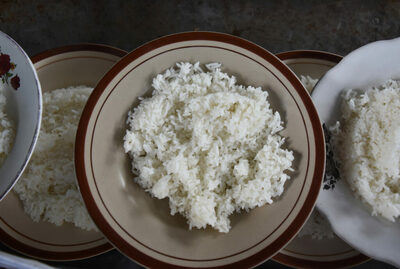
**250 Years Ago: News of the Battles of Lexington and Concord**
#History #Histodon #Histodons #UK #UnitedKingdom #USA #US #UnitedStates @histodon @histodons
![]() **The Greco-Roman Origins of the Eucharist**
**The Greco-Roman Origins of the Eucharist**
ReligionForBreakfast
#Video length: thirty-three minutes and forty-eight seconds.
**Extreme drought contributed to barbarian invasion of late Roman Britain, tree-ring study reveals**
“_Researchers argue that Picts, Scotti and Saxons took advantage of famine and societal breakdown caused by an extreme period of drought to inflict crushing blows on weakened Roman defences in 367 CE. While Rome eventually restored order, some historians argue that the province never fully recovered._”
#History #Histodon #Histodons #Romans #RomanEmpire #Britain #UK #UnitedKingdom #Drought @histodon @histodons
**Are all writing systems equally easy / hard?**
**These four charts sum up the state of AI and energy**
https://www.technologyreview.com/2025/04/17/1115320/four-charts-ai-energy/.
#Graphs #Charts #AI #ArtificialIntelligence #Technology #Tech #Energy #FossilFuels @ai
**A Usefully Useless Projection**
_“Friends, I’m excited to share that I have just completed a world physical map, in my new asymmetric monstrosity projection.”_
https://somethingaboutmaps.wordpress.com/2025/04/10/a-usefully-useless-projection/.
![]() **Brits banned from bringing back cheese and meat from EU**
**Brits banned from bringing back cheese and meat from EU**
Channel 4 News
“_British tourists will no longer be able to bring back cheese or meat products from the European Union - even a sandwich or products from duty free._”
#Video length: twenty seconds.
https://www.youtube.com/watch?v=re6l7dVXIrA.
#News #UK #UnitedKingdom #EU #Europe #EuropeanUnion #Cheese #Meat
Seems bad.
"Half the World’s People Depend on Rice. New Research Says Climate Change Will Make it Toxic"
**OBSERVER: Europe’s Warmest Year on Record—Striking Climate Contrasts in 2024**
_“2024 was the warmest year on record for Europe. We observed the longest heatwave in southeastern Europe and record glacier mass loss in Scandinavia and Svalbard. But 2024 was also a year of marked climate contrasts between eastern and western Europe, said C3S Director Carlo Buontempo.”
#Europe #Climate #Report #ClimateChange #Environment @climatechange
**Drowning in junk science: Is there any hope at all?**
https://statmodeling.stat.columbia.edu/2025/04/17/drowning-in-junk-science-is-there-any-hope-at-all/.
Average US rate on a 30-year mortgage climbs to 6.83%, highest level since late February
https://apnews.com/article/mortgage-rates-housing-interest-financing-home-7cba4383c29508111817ad0280d419ac?utm_source=flipboard&utm_medium=activitypub
Posted into Business and Finance @business-and-finance-AssociatedPress
**A Rabbi Walks into an Evangelical College**
https://www.marginaliareviewofbooks.com/post/a-rabbi-walks-into-an-evangelical-college
@paregorios To be fair, it was only published today.
Thank you for the link.
For those interested in the location and other literature on this site: https://pleiades.stoa.org/places/678404/
**Austrian Graffiti Discovered in a Holy Site: Researchers Decipher Medieval Inscriptions in the Room of the Last Supper in Jerusalem**
#History #Medieval #Medievodons #Graffiti #Jerusalem @medievodons
**Tel Shiqmona during the Iron Age: A first glimpse into an ancient Mediterranean purple dye ‘factory’**
“_It is the only site in the Near East or around the Mediterranean—indeed, in the entire world—where a sequence of purple-dye workshops has been excavated and which has clear evidence for large-scale, sustained manufacture of purple dye and dyeing in a specialized facility for half a millennium, during the Iron Age (ca. 1100–600 BCE)._”
Shalvi G, Sukenik N, Waiman-Barak P, Dunseth ZC, Bar S, et al. (2025) Tel Shiqmona during the Iron Age: A first glimpse into an ancient Mediterranean purple dye ‘factory’. PLOS ONE 20(4): e0321082. https://doi.org/10.1371/journal.pone.0321082.
#OpenAccess #OA #Research #DOI #Article #Ancient #Culture #Archaeology #Archaeodons #IronAge #Mediterranean #Academia #Academics @archaeodons
**Scientists find evidence that overturns theories of the origin of water on Earth**
"_University of Oxford researchers have helped overturn the popular theory that water on Earth originated from asteroids bombarding its surface. Instead, the material which built our planet was far richer in hydrogen than previously thought._"
https://www.ox.ac.uk/news/2025-04-16-scientists-find-evidence-overturns-theories-origin-water-earth.
**Bismarck’s Britain**
“_The German chancellor Otto von Bismarck saw himself as a puppet-master, engineering British politics from afar in his feud with Gladstone._”
https://www.historytoday.com/archive/history-matters/bismarcks-britain.
#History #Histodon #Histodons #Germany #UK #UnitedKingdom #Europe #Bismarck #Gladstone #Politics @histodon @histodons
Not a bot, just a fifty-year-old male who reads occasionally.
Toots are humanities, science, non-fiction, book, map, chart, and graph related. Some toots containing videos may also find their way into the timeline.
Toots or follows or boosts or mentions ≠ endorsements of any particular notion or notions.
Finis







